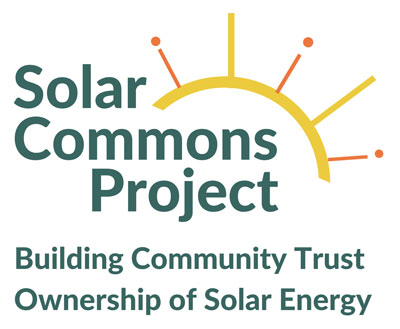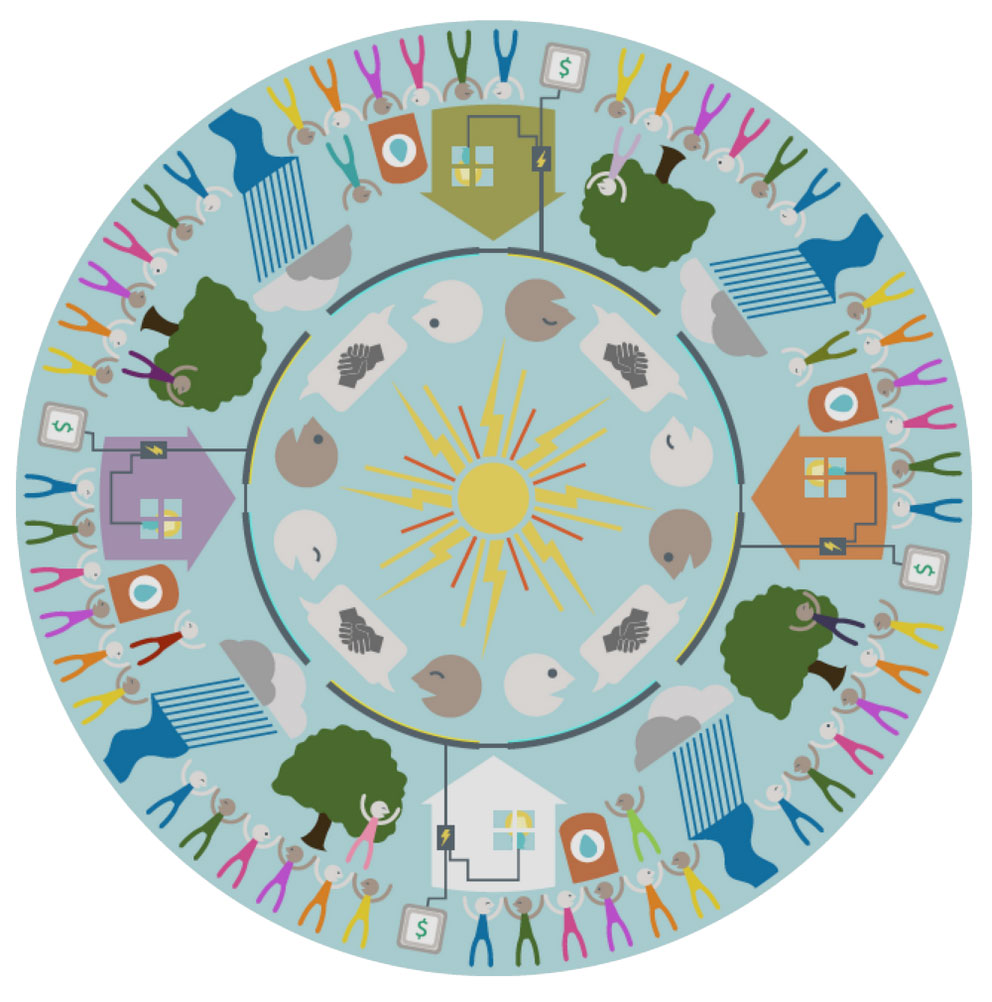
Image from: Dakota Worden
Overview
Over the next three years with our funding partners, Solar Commons Project researchers will design a TOOLKIT for communities to apply the model and build their own Solar Commons. We’ll develop and test our open-source tools with community partners in Living Labs. By building several 500kW solar arrays in rural and urban areas, we will develop and test the community trust ownership tools these low-income neighborhoods and tribal communities need to gather, locally manage and share their portion of the sun’s common wealth benefits. The toolbox will be shared with open-source criteria and standards that assure its robust future as twenty-first century infrastructure for commoning.
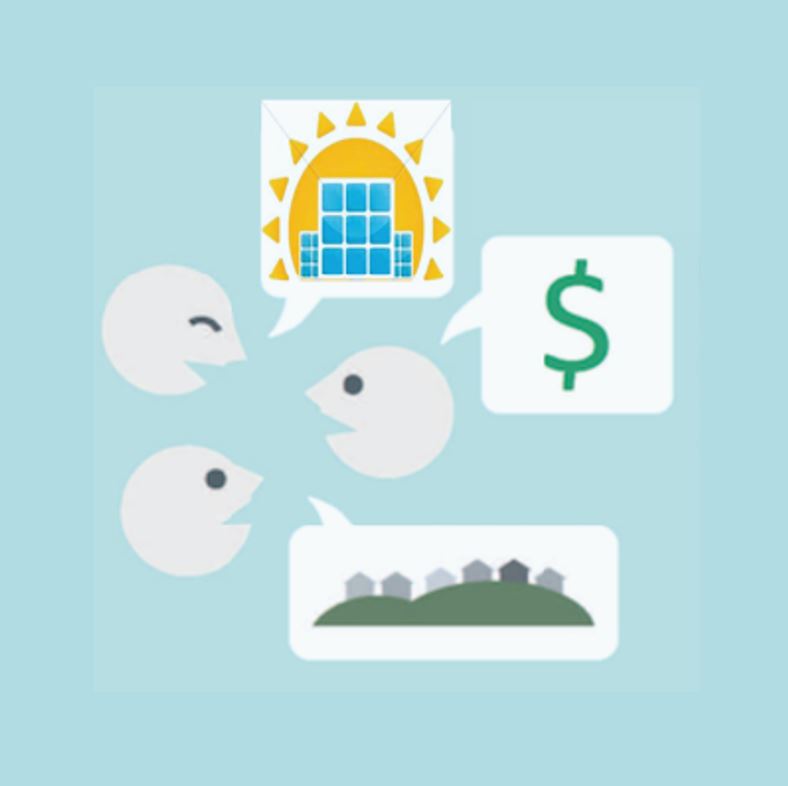
1. Legal/Trust
Trust law forms the creative base of the Solar Commons Model. Solar Commons Project researchers will produce legal templates from the living lab SC prototypes as well as a DIY process guide to using trust creation and trust agreement as commons peer governance tools. When a living lab community partner is from an indigenous community, the Solar Commons Trust Agreement process will have steps to include the language, worldview, and values of the indigenous community. In this way, our indigenous partners will help us adapt trust law to be used from indigenous perspectives. In all cases, the Solar Commons Model will demonstrate that community trust solar ownership uses solar panels to gather sunlight as a source of life and transform it into, clean electricity with market value and then into common wealth for community repair and empowerment.
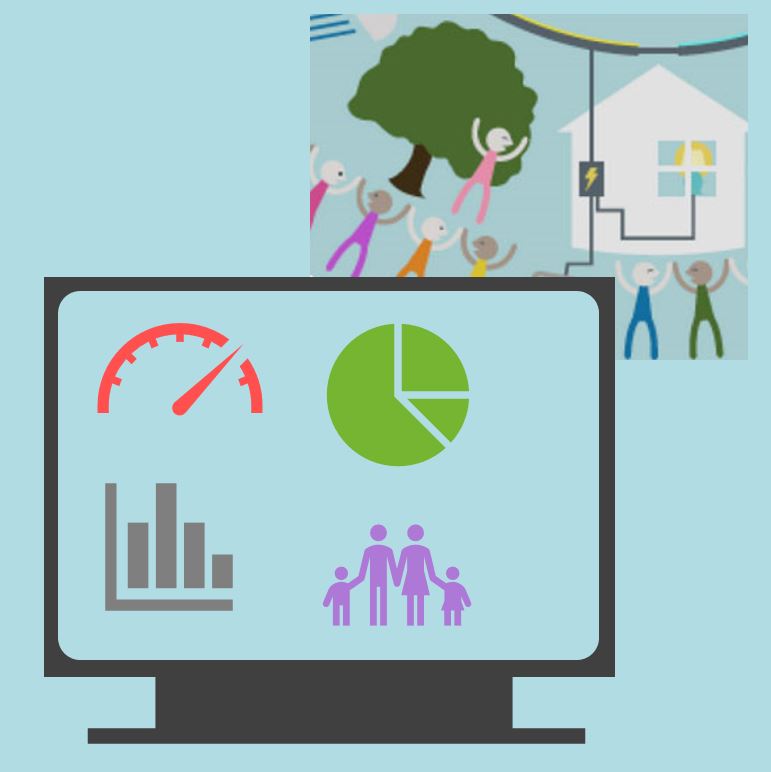
2. Digital Dashboard
With art and storytelling functions, the Solar Commons Dashboard will provide transparency, accountability and a gift economy paradigm for local Solar Commons community partners. The dashboard will track the gift of sunshine as kilowatts, market priced solar savings, and common wealth trust funds for reparative community-building. Community trust ownership needs new tools that empower the community beneficiaries to participate as agents in creating and managing community trusts. The dashboard plus app extension will provide this capacity. It will include a database that inputs solar savings from the host’s monthly electric bills and records the trust’s common wealth expenditures; an annual output tool will gather this information to create yearly statements so that trust managers and protectors can easily report the trust’s activities. The dashboard will be one tool for embedding market priced solar in the broader values of earth and community well-being.
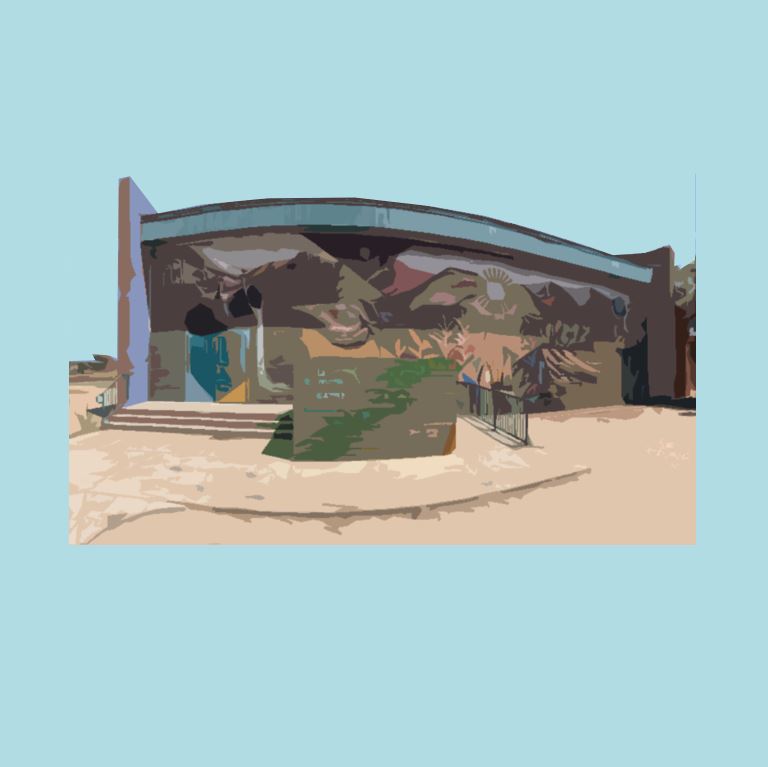
3. Public Art as equitable title
The Solar Commons Model empowers trust beneficiaries by showcasing their “equitable title” to the trust benefits of solar energy in public-facing art. Through murals and celebrations, Solar Commons beneficiaries make visible and public the community values they bring to the trust agreement. Public art is also used to make visible the social transformation of energy from neoliberal market-valued fossil fuels to gifts of the sun’s bounty. For the Solar Commons Toolkit, the art team creates flexible process tools so that place and agent-making public art can be done in all Solar Commons communities. Also, because solar energy is a distributed, universal technology, the Solar Commons art team will be researching (and making visible on this website) how communities around the world envision solar energy technology embedded in cultural values that show equitable relationships among earth systems and social systems. See the Gallery of Solar Commoning.
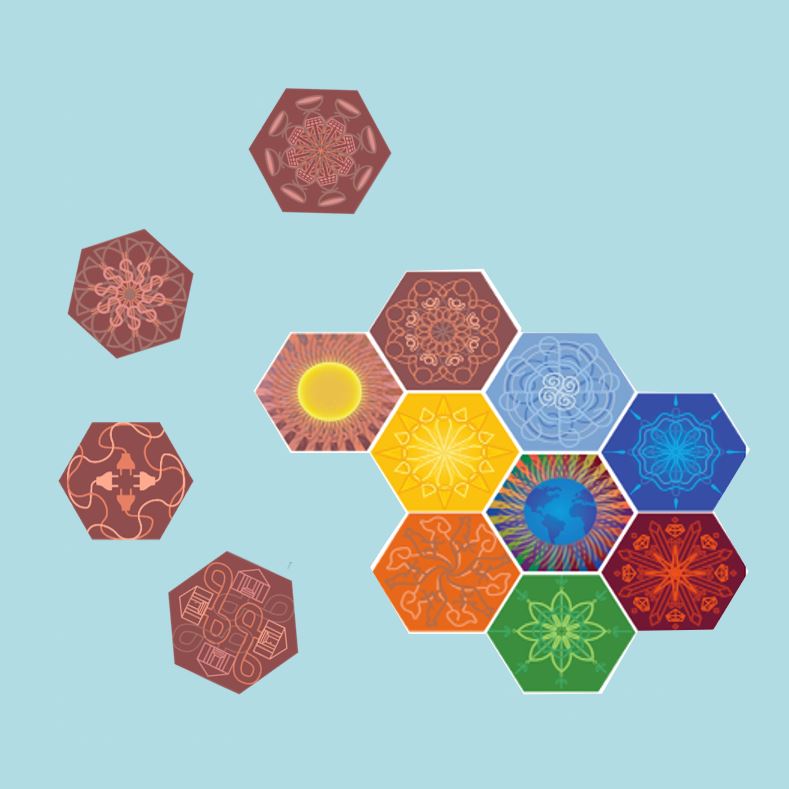
4. Game
The Solar Commons Project Art Team has created a tile board game that educates kids (ages 10 and up) about social-ecological relationships involved in Nature Commoning and Solar Commoning. This is a place-based game where solar technology is introduced in the context of “gathering” and using the gifts of nature and community as those gifts appear in kids’ local regions (sunshine, water flow, plants, minerals, wind and soil) and in kids’ lives (acts of kindness, sharing and cooperation among neighbors). Kids learn to play by observing the mutualism of local natural and social systems in simple vignettes—”you took a long shower today; give back two water tiles.” Game rules are simple and invite creativity, reciprocity and laughter. The goal of the game is to build and connect beautiful, healthy, colorful tile neighborhoods through nature commoning and solar commoning while returning fossil fuel tiles to the stack of common wealth from which they came.
As with many children’s games, adults are the ones learning how to play in right relation to the world. Indeed, the complex legal work of building equitable community trust ownership of solar energy is an exercise in learning to play the Solar Commons Game. Solar Commons researchers believe that, through the Solar Commons Game, kids become their parents’ teachers and their communities’ messengers. With this game the next generation of earth citizens learns what it means to work and care in an “embedded economy” with planetary boundaries as the ceiling and community well-being as the foundation. Production and sale of this game will provide a revenue stream for the artists who work with Solar Commons communities to showcase their equitable title to the sun’s common wealth benefits through public art.
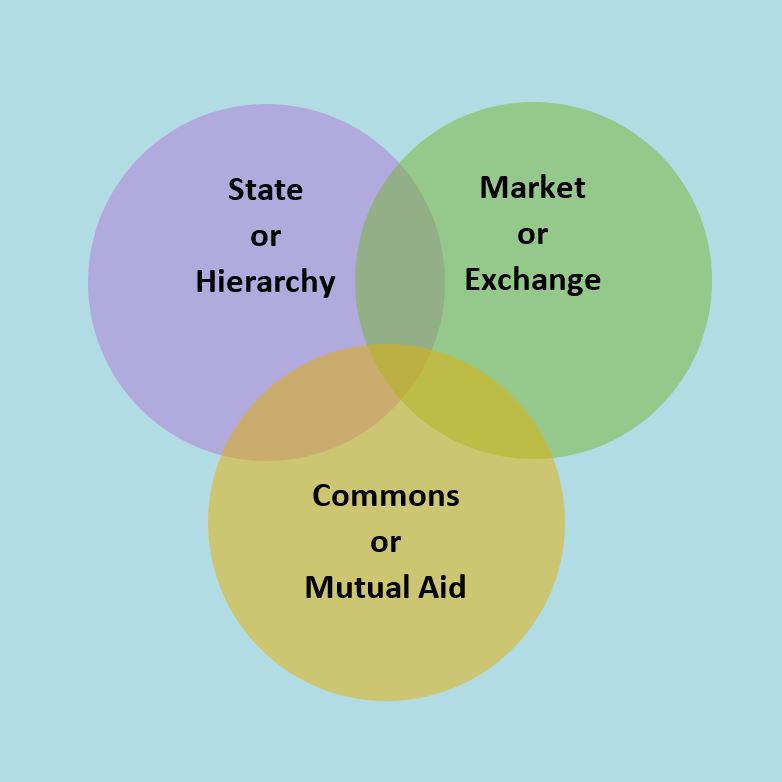
5. Standards for Governance
The Solar Commons name and model are used with permission from the Solar Commons, a 501(c)3 nonprofit organization. The Solar Commons Project is developing the standards, tools and processes by which the name and model of Solar Commons can become recognized and respected, by state and market sectors, as a robust institution of the commons sector. State agencies raise capital for public good through taxes; market actors finance private activity through banks. But low-income civic communities in rural and urban areas lack institutions to sustainably fund and locally govern their community-building, commoning work. Funders and neighborhoods need robust, tested community ownership models to bring social equity to the energy transition. Solar Commons researchers are building the practical oversight so that Solar Commons Trusts become broadly used, trusted institutions in a more ecologically grounded economy.


